This article needs additional citations for verification .(December 2020) |

Hans Dammann (1867 - 1942) was a German sculptor; known primarily for his war memorials.
This article needs additional citations for verification .(December 2020) |

Hans Dammann (1867 - 1942) was a German sculptor; known primarily for his war memorials.
Dammann was born 16 June 1867 at Proskau in the Kingdom of Prussia.
His father, Karl Dammann , was a Professor of veterinary medicine. In 1877, his family relocated to Hanover. From 1885 to 1888, he attended the Technical University there. After 1888, he continued his training at the Berlin University of the Arts. His primary instructors were Albert Wolff, Ernst Herter, Peter Breuer and Gerhard Janensch. [1] After completing his studies, in 1895, he went to Rome.
Shortly after, he sent some works to the Große Berliner Kunstausstellung. He would participate in their exhibitions regularly until 1913. Upon returning to Berlin, he worked as a freelance sculptor. Most of his commissions were small. His first large scale work was a fountain with a statue of a night watchman at the Lindener Marktplatz (1896). That same year, he married Frida Martha Hirschwald (1878–1952).
More large commissions failed to materialize, so he joined a workshop for cemetery art in Plauen. Over the coming years, he created more than 130 funerary monuments, including full-scale tombs at the Kaiser Wilhelm Memorial Cemetery in Charlottenburg and at the Friedhof Wilmersdorf. [2]
He continued to do a few non-cemetery works, including another fountain in Bad Salzuflen, for the Hoffmannstift, a hospital operated by Hoffmann's Starch Factories (for which he waived his fee), and a figure of a blacksmith for the second parapet of the town hall in Bielefeld. In 1906, he created the "Morning" and "Evening" figures for the large clock at the New Town Hall in Hanover. A group of figures for the fountain at the "Kaiserjubiläumspark" in Bad Homburg vor der Höhe earned him the title of Professor, from Kaiser Wilhelm II, in 1914.
As a reserve officer, he was drafted not long after the start of World War I. In only a few weeks, he returned home wounded. This prompted him to undertake the creation of what are now his best known works; a series of war memorials for soldier's graves. As with his civil designs, many were used over with slight modifications. After the war, many of his models were reused by the Weimar Republic as war memorials. His last civil work was the Elisabethenbrunnen , in the spa park at Bad Homburg, unveiled in 1918.
From 1922, he created war memorials, exclusively. Over seventy are still in existence. As his health began to decline, assistants were responsible for most of the work. From 1933, all of his memorials were created in collaboration with Heinrich Rochlitz (b.1882), about whom little is known.
He died on 15 June 1942 in Berlin.
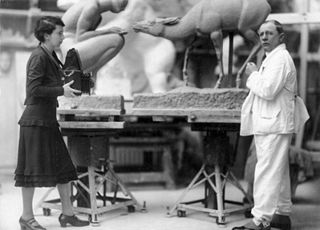
Professor Hugo Lederer was an Austro-Hungarian-born German sculptor.

Jerusalem Church is one of the churches of the Evangelical Congregation in the Friedrichstadt, a member of the Protestant umbrella organisation Evangelical Church of Berlin-Brandenburg-Silesian Upper Lusatia. The present church building is located in Berlin, borough Friedrichshain-Kreuzberg, in the quarter of Friedrichstadt. Jerusalem Church is fourth in rank of the oldest oratories in the town proper.

The Dorotheenstadt Cemetery, officially the Cemetery of the Dorotheenstadt and Friedrichswerder Parishes, is a landmarked Protestant burial ground located in the Berlin district of Mitte which dates to the late 18th century. The entrance to the 1.7-hectare (4.2-acre) plot is at 126 Chaussee Straße. It is also directly adjacent to the French cemetery, established in 1780, and is sometimes confused with it.
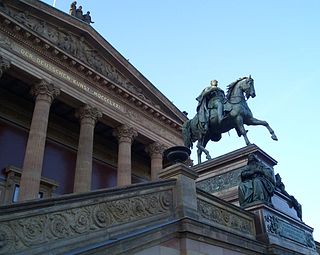
Alexander Emil Ludovico Calandrelli was a German sculptor of Italian descent.

Trinity Church (Dreifaltigkeitskirche) was a Baroque Protestant church in Berlin, eastern Germany, dedicated to the Holy Trinity. It was opened in August 1739 and destroyed in November 1943, with its rubble removed in 1947.

Louis Sussmann-Hellborn, also spelled Ludwig Sussman Hellborn, was a German sculptor, painter, art collector and contractor.

Otto Lessing was a prominent German Historicist sculptor whose work largely shaped the appearance of Berlin in the late 19th and early 20th centuries. He was the son of history and landscape painter Carl Friedrich Lessing and the great great nephew of poet Gotthold Ephraim Lessing.
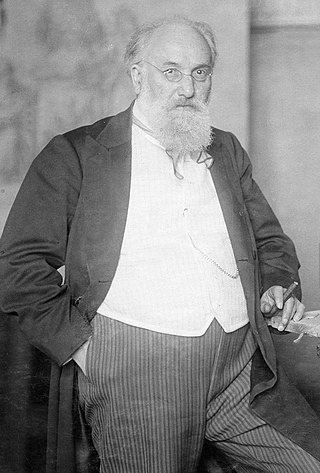
Karl Ludwig Otto Geyer was a German sculptor. His brother was the architect, Albert Geyer.

Wilhelm von Rümann was a prominent German sculptor, based in Munich.

Waldfriedhof Zehlendorf is a cemetery located in Berlin's Nikolassee district. The cemetery occupies an area of 376,975 m2. An additional Italian war cemetery was created there in 1953. A number of notable people of Berlin are buried at the cemetery; some have a grave of honor. In particular, all of Berlin's deceased post-war mayors are buried here.

Joseph Johann Ludwig Uphues was a German sculptor.

Johannes Boese, also spelled Böse, was a German sculptor and art professor.
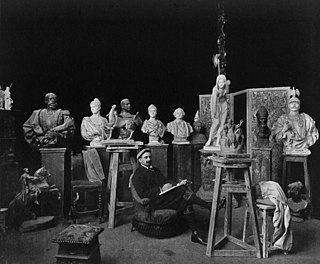
Walter Schott was a German sculptor and art professor.

Dorit Schmiel was a German seamstress who became the thirteenth known person to die at the Berlin Wall. Schmiel was fatally shot by East German border guards while attempting to escape from East Berlin to West Berlin with a group of friends, including her fiancé. Schmiel was one of only eight women to die at the Berlin Wall, and at 20 years-old was the second youngest woman victim.
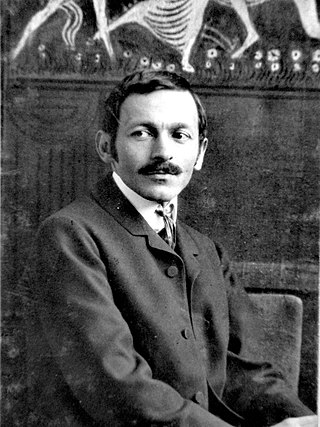
Ignatius Taschner, also known as Ignaz Taschner, was a German sculptor, medalist, graphic designer and illustrator.
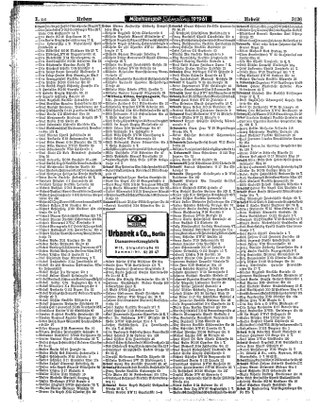
Rudolf Urban was a German man who died as a result of injuries sustained while crossing the Berlin Wall.

Ascan Lutteroth was a German landscape painter; associated with the Düsseldorfer Malerschule.

Emil Cauer the Younger (1867-1946) was a German sculptor, known for his monuments and fountains in Berlin.

Karl Gustav Rutz was a German sculptor.

Albert Hertel was a German landscape painter.
![]() Media related to Hans Dammann at Wikimedia Commons
Media related to Hans Dammann at Wikimedia Commons